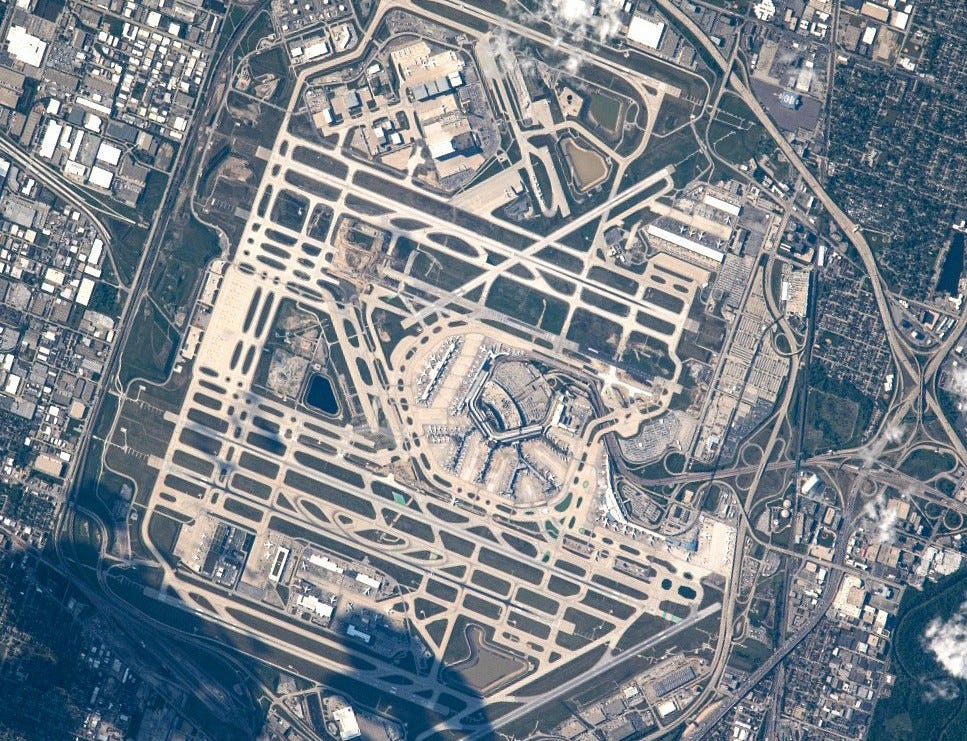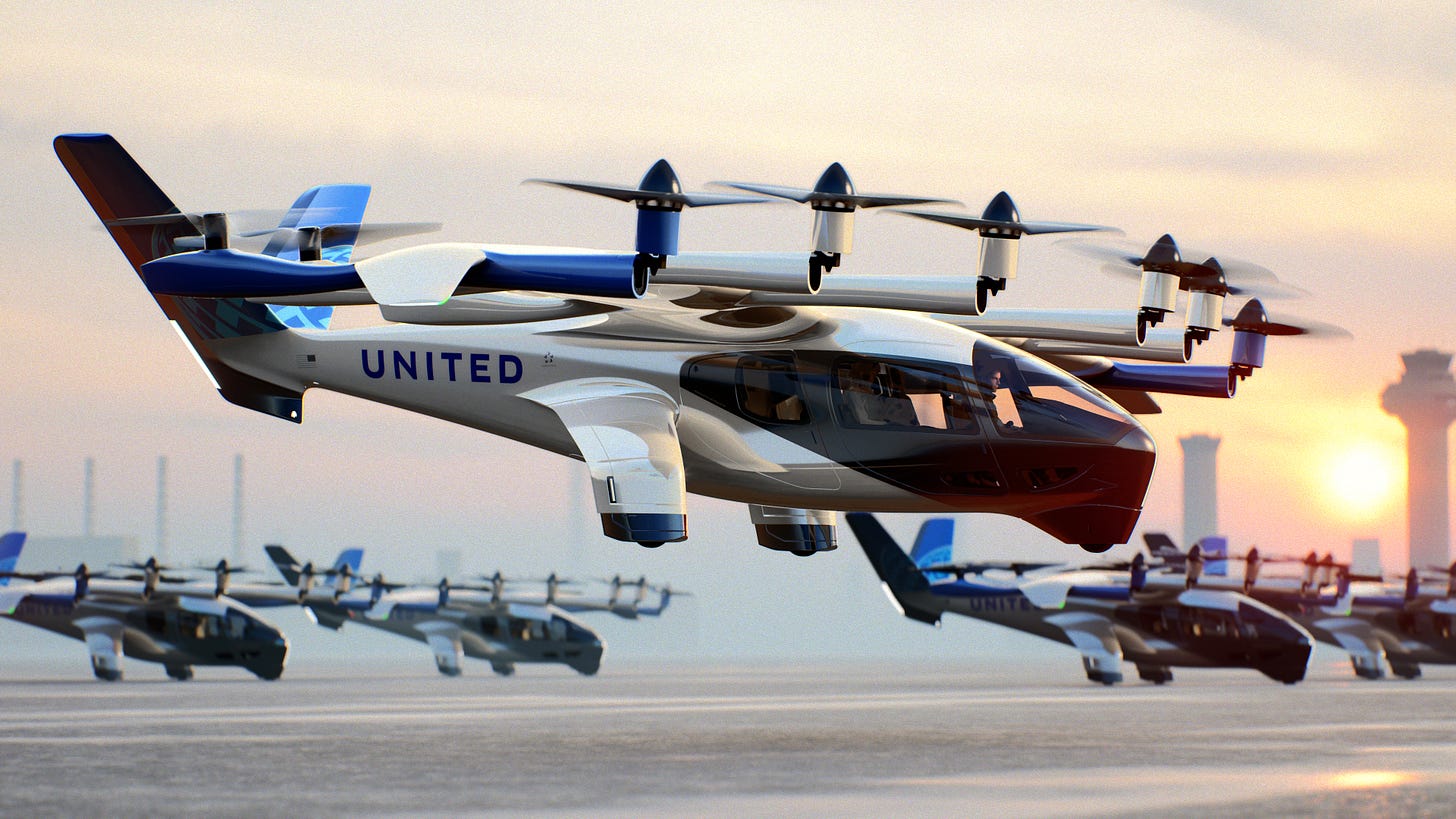22: The Airport Advantage
How cities compete through modern aviation infrastructure.
160000Z DEC 24
Welcome to Flightlines.
In previous issues, we’ve explored how global cities compete for prominence through connectivity. This week we’ll take a look at the foundation of that competition, the airports themselves. How cities plan, develop, and leverage their aviation infrastructure says a lot about their ambitions and capabilities on the world stage.
The relationship between cities and airports has evolved dramatically since the early days of commercial aviation. What began as simple airfields on city outskirts have become complex economic engines that can shape civic planning and regional growth. These facilities now serve as powerful indicators of urban ambition and a city’s aspirations for the future.
The Airport Advantage
The evolving relationship between cities and airports has left patterns that still influence development today. Consider Chicago's gamble in the 1950s with O'Hare International Airport. Placing a major airport 17 miles from downtown drew criticism at the time, but this decision showed the kind of long-term thinking that can cement a city’s forward trajectory.
The distance that critics questioned became O'Hare's greatest asset, providing space for expansion that would have been impossible closer to downtown. This foresight, that air traffic would be an increasing part of city life with an increasing foot print, helped establish Chicago as a major business hub and enabled O'Hare to emerge as one of the world's busiest airports.
Not every city took the mono-hub approach. London chose a markedly different path, developing a network of airports that each serve distinct markets.

Heathrow handles long-haul and premium traffic, while Gatwick focuses on leisure routes. London City caters to business travelers, and Stansted and Luton serve the low-cost segment. This distributed model spreads aircraft noise and load across the region, but it complicates ground transportation and fragments connectivity.
Singapore's Changi Airport is perhaps the most ambitious example. More than just a transit point, Changi has become a destination itself, complete with butterfly gardens, movie theaters, and the world's tallest indoor waterfall.

This investment in passenger experience seems extravagant, but it serves a strategic purpose: helping Singapore defend its position as a key transfer hub despite fierce competition from larger markets.
Hong Kong took an even more dramatic approach. Faced with the limitations of its notorious and aging Kai Tak Airport, the city made the decision to build an entirely new airport on a man-made island at Chek Lap Kok.

This massive infrastructure project, completed in 1998, did more than just provide room for expansion—it rebuilt Hong Kong's connectivity to the Pearl River Delta region by adding integrated rail and ferry networks.
The relationship between airports and urban success has only grown stronger in recent years. Istanbul's decision to build an entirely new airport rather than continue expanding Atatürk International Airport demonstrates how cities leverage aviation infrastructure to achieve broader strategic goals. The new Istanbul Airport, with its ambitious design capacity of 200 million passengers annually, advances Turkey's vision of establishing Istanbul as a major global hub connecting Europe, Asia, and Africa.
These different approaches demonstrate a crucial truth: there's no single template for airport development. Each city must grapple with its own unique combination of geography, population patterns, economic goals, and environmental constraints. Success requires balancing multiple factors that often pull in opposing directions.
Modern airports face new challenges that would have been almost unimaginable to their early planners. The rise of urban air mobility promises to add another layer of complexity, potentially requiring new facilities within city centers to handle electric vertical takeoff and landing (eVTOL) aircraft. United Airlines and Archer have selected O’Hare to Vertiport Chicago as the next point to point route in which the two companies will utilize Archer’s eVTOL aircraft.
Cities that fail to modernize their aviation infrastructure risk losing connectivity to more ambitious competitors. We've seen this play out dramatically in Southeast Asia, where Singapore and Bangkok have engaged in a decades-long competition for transfer traffic, each building increasingly sophisticated facilities to attract airlines and passengers.
While cities around the world push forward with ambitious airport development, American airports face a unique set of obstacles. Many of our terminals date from the dawn of the jet age, designed for an era when aviation played a very different role in urban life.

The challenge extends beyond aging infrastructure. American airports often operate within a web of jurisdictional complexity that their international counterparts would find baffling. Take New York's airports as an example, where the Port Authority must balance the interests of two states, multiple cities, and countless local stakeholders. This governance structure, while democratic, can make even minor improvements feel like diplomatic negotiations.
Funding presents another challenge. While many global airports operate as independent businesses, U.S. airports often rely on a complex mix of federal grants, passenger facility charges, and municipal bonds. This funding model can make it difficult to undertake the kind of bold developments we've seen in places like Singapore or Istanbul.
Despite these challenges, we're seeing signs of a renaissance in American airport development. Kansas City International's new single terminal, which replaced an outdated three-terminal design, shows how American airports can boldly reimagine themselves.

Denver's ongoing terminal expansion demonstrates how airports can adapt to serve rapidly growing urban regions. Projects like this suggest that American cities do recognize the crucial role airports play in their future competitiveness.
Successful cities will be those that view their airports not just as infrastructure to be maintained, but as strategic assets to be nurtured. The most prosperous urban centers will be those that can balance operational needs with community interests, and changing technologies. With increasing global competition, how cities develop and leverage their aviation infrastructure will determine whether they thrive or fade in importance on the world stage. —✈
✈
Thank you for reading.
Flightlines will be back next week with more insights and updates from the world of commercial aviation.
Until then, safe travels and happy flying!





Thoroughly enjoyed this one! I liked how you highlighted a variety of airports, with visual aids, showing their unique strategies. Never thought about the long-term thinking that building an airport far from town entailed, or the fact that cities compete to be the most appealing transit hub in a region. So many sides of the industry to illuminate, and you do it so well!